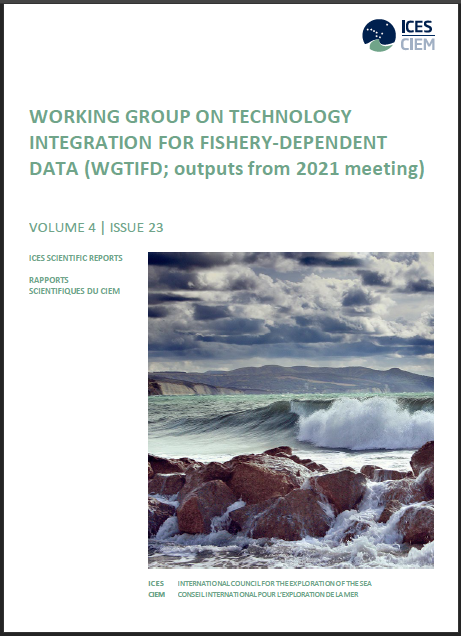The Working Group on Technology Integration for Fishery-Dependent Data (WGTIFD) examines electronic technologies and applications developed to support fisheries-dependent data collection, both on shore and at sea, including electronic  reporting (ER), electronic monitoring (EM), positional data systems, and observer data collection. This report provides a summary over the 3-year period of the discussions and recommendations by technology service providers, academic and governmental marine institutions, and non-profit environmental organizations.
reporting (ER), electronic monitoring (EM), positional data systems, and observer data collection. This report provides a summary over the 3-year period of the discussions and recommendations by technology service providers, academic and governmental marine institutions, and non-profit environmental organizations.
A number of tools are being adopted more widely across a range of fisheries, vessel sizes, etc., including ER systems that allow for self-reporting to meet certain data requirements and positional data systems, such as vessel monitoring systems (VMS), which can provide near-real-time location of fishing fleets. EM, which is the use of imagery, sensors, and global positioning systems (GPS) to independently monitor fishing operations, effort, and/or catch, has been gaining interest very rapidly over the last five years, but there are some challenges in terms of inadequate funding, lack of clear policies and standards, and the costs of manual video review and data transmission. In almost every instance of an EM program or project, computer vision (CV) and machine learning (ML) applications are being developed to reduce costs, and improve the timeliness and accuracy of information. While CV/ML alone will not lower the barrier entirely for much wider adoption of EM, these technology developments are advancing in the marine sciences and will help shape future monitoring programs.

